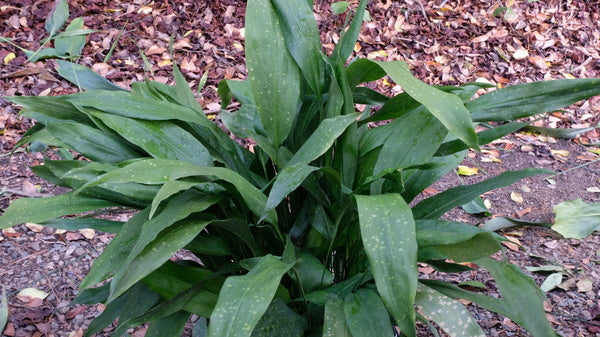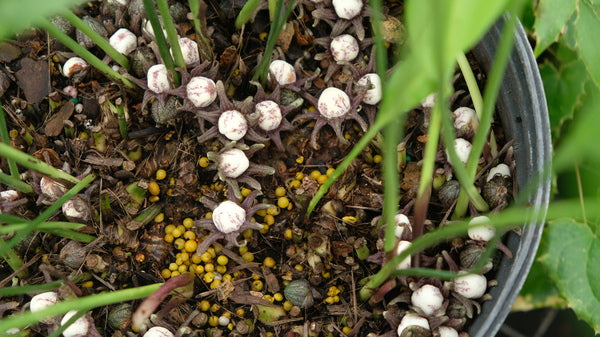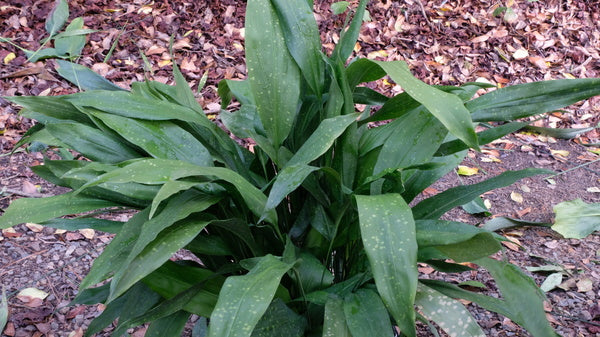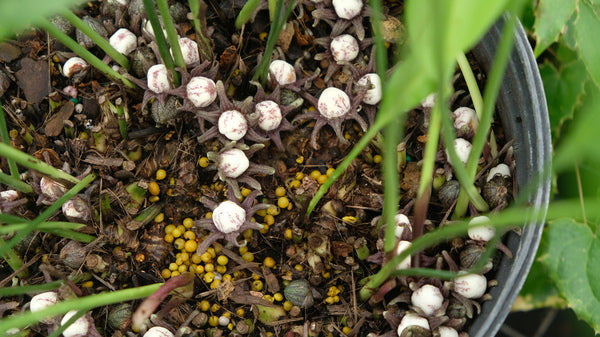Aspidistra subrotata 'Eyes Have It'
Eyes Have It Cast Iron Plant
This plant is not currently for sale. This is an archive page preserved for informational use.
Shop Available AspidistraItem #: 17210
Zones: 9a to 10b, guessing
Dormancy: Evergreen
Height: 20" tall
Origin: China, Taiwan, Thailand, Vietnam
Pot Size: 3.5" pot (24 fl. oz/0.7 L)
Aspidistra 'Eyes Have It' is a 2023 Plant Delights/JLBG introduction of an Alan Galloway collection of the Southeast Asian (China, Vietnam, and Thailand) native cast iron plant. The green leaves are lightly spotted with muted yellow dots, but when Aspidistra 'Eyes Have It' comes into flower in late November (NC), the ground around the stalks is covered with what appears to be a mass of white eyeballs, each surrounded by purple eyelashes. This is the most floriferous aspidistra clone that we've ever encountered. You have to see this to believe it's real.
Maintenance:
Aspidistra are very low maintenance perennials. Each leaf can last up to 3 years, but after the second year, it will begin to show signs of aging and leaf degradation. For that reason, we recommend removing all old foliage regularly to retain the attractiveness of the clump. It's always disappointing to see large patches of cast iron plants in public spaces where it hasn't been properly maintained.
Growing Conditions:
Cast iron plants grow well in both moist and dry soils as long as the drainage is good. Aspidistra must be grown in shade, since their foliage will scorch if they are subjected to sun. In the jungles where they grow, they are often seen in very deep shade.
In containers, they make superb house plants. The common name cast iron plant speaks to their durability in less than ideal conditions. Regular moisture, including increased humidity when they are grown as house plants, keeps them from getting stressed and becoming susceptible to spider mites.
Garden Value:
The bold texture and upright form of cast iron plants is invaluable in the garden, since there few other plants with this form and texture. Many have amazing flowers, produced at the base of the foliage, often in the winter months. While these flowers are rarely noticed in the garden, they can be quite attractive in the home.


-
Other Attributes
Genus: Aspidistra
Flower Color: Multicolor , Purple/Lavender , Violet
Leaf Color: Green , Variegated
Bloom Time: Winter
Container Role: Thrillers
Garden Themes: Living Wall
Other: Deer Resistant Plants , Drought Tolerant Plants , Dry Shade Plants , Pollinator Plants , Medicinal Plants , Plant Delights Introductions , Plants from China , Rabbit Resistant Plants , Salt Tolerant Seaside Plants , Tropical Looking Plants , House Plants



